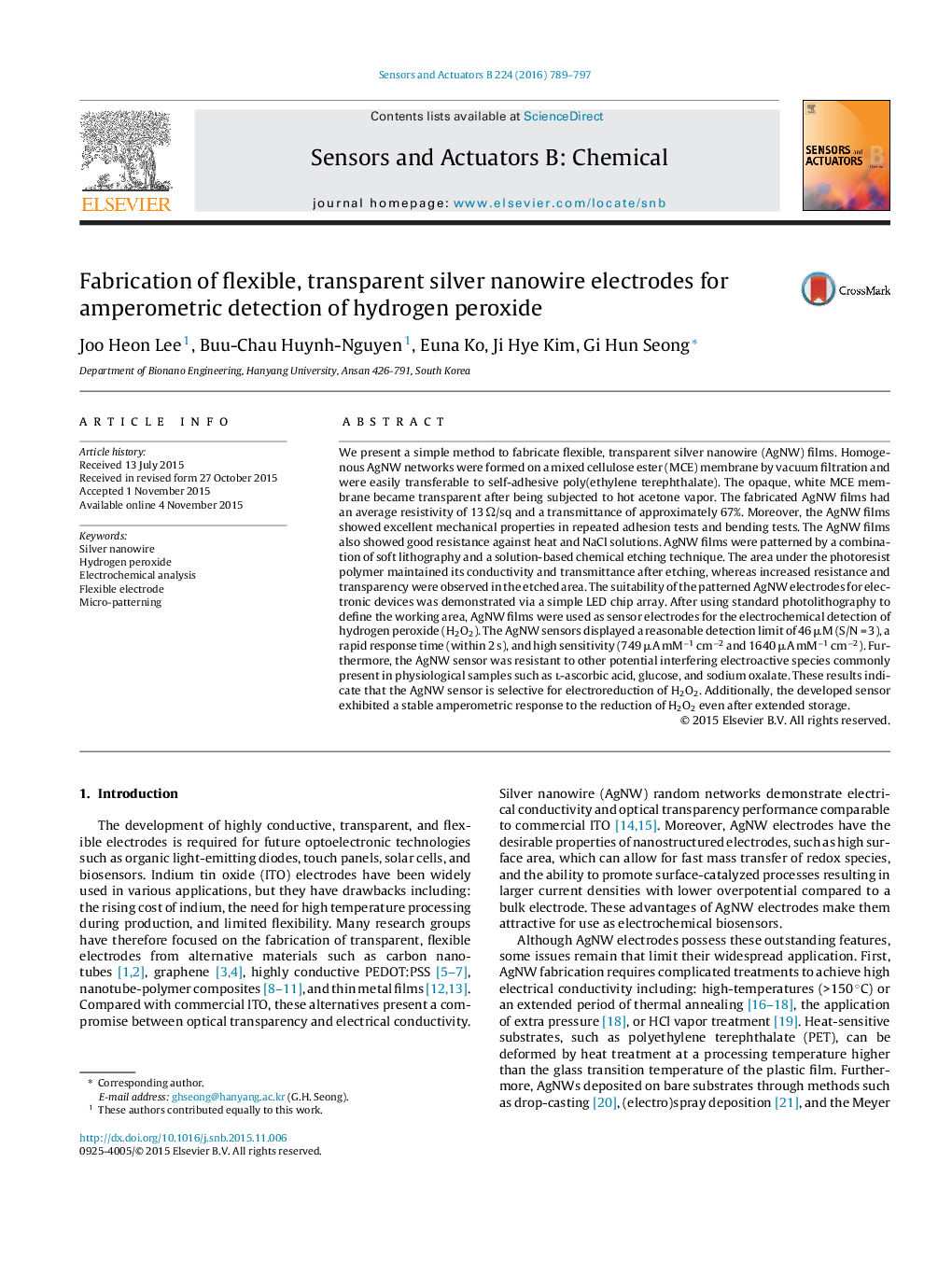| Article ID | Journal | Published Year | Pages | File Type |
|---|---|---|---|---|
| 750550 | Sensors and Actuators B: Chemical | 2016 | 9 Pages |
We present a simple method to fabricate flexible, transparent silver nanowire (AgNW) films. Homogenous AgNW networks were formed on a mixed cellulose ester (MCE) membrane by vacuum filtration and were easily transferable to self-adhesive poly(ethylene terephthalate). The opaque, white MCE membrane became transparent after being subjected to hot acetone vapor. The fabricated AgNW films had an average resistivity of 13 Ω/sq and a transmittance of approximately 67%. Moreover, the AgNW films showed excellent mechanical properties in repeated adhesion tests and bending tests. The AgNW films also showed good resistance against heat and NaCl solutions. AgNW films were patterned by a combination of soft lithography and a solution-based chemical etching technique. The area under the photoresist polymer maintained its conductivity and transmittance after etching, whereas increased resistance and transparency were observed in the etched area. The suitability of the patterned AgNW electrodes for electronic devices was demonstrated via a simple LED chip array. After using standard photolithography to define the working area, AgNW films were used as sensor electrodes for the electrochemical detection of hydrogen peroxide (H2O2). The AgNW sensors displayed a reasonable detection limit of 46 μM (S/N = 3), a rapid response time (within 2 s), and high sensitivity (749 μA mM−1 cm−2 and 1640 μA mM−1 cm−2). Furthermore, the AgNW sensor was resistant to other potential interfering electroactive species commonly present in physiological samples such as l-ascorbic acid, glucose, and sodium oxalate. These results indicate that the AgNW sensor is selective for electroreduction of H2O2. Additionally, the developed sensor exhibited a stable amperometric response to the reduction of H2O2 even after extended storage.
